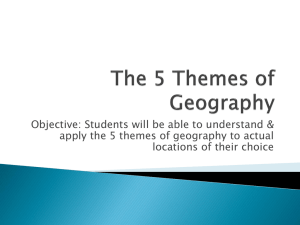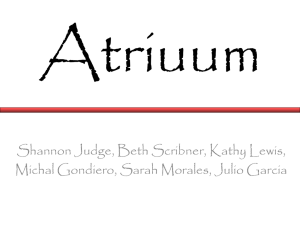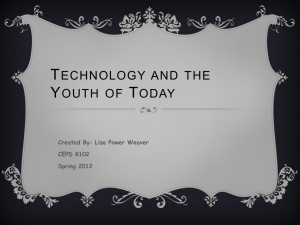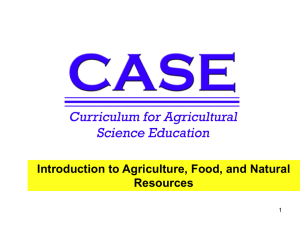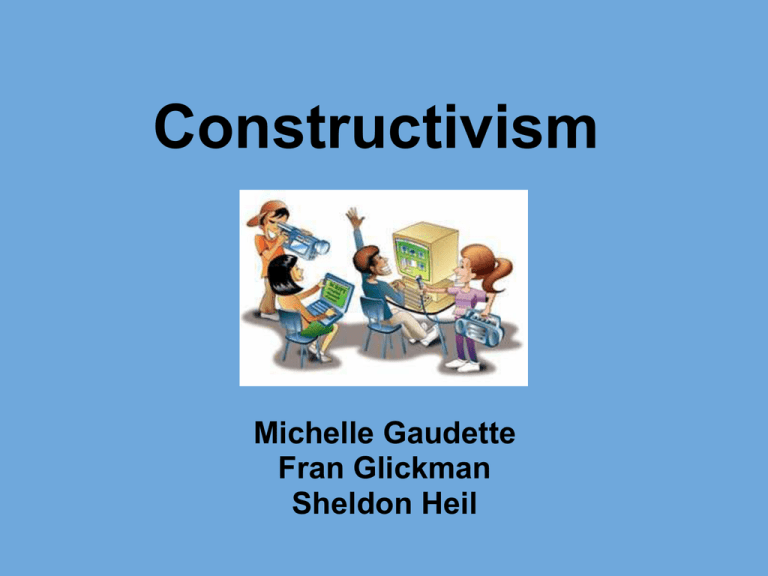
Constructivism
Michelle Gaudette
Fran Glickman
Sheldon Heil
What is Constructivism?!?
• Theory based on teaching students by accessing their prior
learning.
• Students learn by exploration and are guided by a teacher
rather than having the teacher dispense knowledge.
• Students' minds are not a "blank slate"
• Teachers are not the "sage on the stage"
• Students learn through experience and making connections
to prior knowledge.
• Teachers are the "guide on the side", serving as a facilitator
of knowledge.
• Experiences are authentic and help student connect what
they are learning to the real world.
History of Constructivisim
• Constructivisim began with Socrates. Socrates asked many
open ended questions that forced students to think critically.
• Educational Theorist Jean Piaget believed that people
construct their own knowledge and that knowledge is based
on experience.
• John Dewey students must construct their knowledge as if
they were in a classroom.
Constructivism Visual
5 E Lesson Plan
Water Cycle Lesson Overview Using
New York State Learning Standard:
the 5E Model:
This Water Cycle Lesson is
designed for grades 3-4. It incorporates
science, language arts, collaboration,
and technology. The lesson is meant to
be broken up over a minimum of three
days and a maximum time of six days.
This lesson has been created using
the 5E Model of "Constructivism." It
begins by first engaging the students,
having the students explore the
materials and explain their reasoning
and findings. The culmination is an
activity extending their knowledge and
evaluating their progress and possibly
that of their classmates as well.
STANDARD 7—Interdisciplinary Problem
Solving
Students will understand the relationships and common
themes that connect mathematics, science, and technology
and apply the themes to these and other areas of learning.
Key Idea 2:
Solving interdisciplinary problems involves a variety of
skills and strategies, including effective work habits;
gathering and processing information; generating and
analyzing ideas; realizing ideas; making connections
among the common themes of mathematics, science, and
technology; and presenting results.
http://www.p12.nysed.gov/ciai/mst/pub/elecoresci.pdf
Engage
Introducing the Water Cycle
•
•
•
•
•
•
•
Most elementary classes have a sink in the classroom.
The teacher will direct one or two students from each table to get a cup of water
(translucent plastic cup) and place it on their table.
The teacher will tell the students,
"Take a good long look at the water. Now -- can you guess how old it is?"
There will be a work sheet that contains this question. The question will also be posted
on the Smart Board. The students will be given a few minutes to
o discuss this question with their class mates
o to come up with a hypothesis
o explain how they arrived to their conclusion
o elect a person to speak (or write) for their group
Engage
Introducing the Water Cycle
•
After a few minutes of the teacher circulating around the room, listening in on the
thoughts of the various groups, the teacher will then ask each group to send up their
representative to write their hypothesis on the Smart board.
o
Note: (the teacher may decide to use a count-down timer on the Smart Board if the class
tends to be one to get off focus)
o
•
The Smart Board will have the question,
o "Take a good long look at the water. Now -- can you guess how old it is?"
•
Under the question on the Smart Board page, there will be a two-column table. The columns are
labeled:
•
o
o
o
"Statement" - where the group will post their hypothesis (guess). - Number of minutes,
days, weeks or years
"Reason." - Brief statement as to why they believe their guess is true
Engage
Introducing the Water Cycle
Continued . . .
• Once all the groups have posted their "statement" and
"Reason" onto the Smart Board, the teacher will pose the
next two or more questions for the students to discuss:
• What does water have to do with the weather?
• In what ways does water affect our lives?
• One cold sunny winter morning, you left for school and
nearly fell because there was a little ice on your
sidewalk. When you returned home that afternoon, the ice
was gone and the sidewalk was dry.
What happened to the ice that was on the sidewalk
in the morning?
Engage
Introducing the Water Cycle Continued . . .
•
Once the class has discussed the questions from the previous page and perhaps other similar
questions, the teacher can then either reveal the answer in any one of the following ways:
o The teacher may state, "The water in your glass may have fallen from the sky as rain
just last week, but the water itself has been around pretty much as long as the
earth has." - Be prepared for questions
o The teacher may answer the students' question by showing a brief video on the Smart
Board to the entire class. (The video link would be on the Smart Board).
o The teacher could have the students go over to the class computers (earphones would be
provided) and watch an introduction video on the water cycle and then take a self quiz.
o
•
Students can participate in creating a KWL gloster about the water cycle. Students
can fill in the K and W sections now and finish the L as part of the extension of the
lesson.
Possible video Choices:
o Brain Pop - Water Cycle - log in = e2t2 and password grant
o Water Cycle Video - "The water cycle goes round and round"
o The Earth's Water Cycle - Environmental Science (Video)
Exploration
• The teacher will take students outside to get a cup of snow.
• The snow will be left in the classroom to melt.
• The snow will be left to evaporate. Students will be asked to
hypothesize about the whereabouts of the water.
• After students suggest that it "went into the air", the teacher
will ask students to test that theory.
• The teacher will lead students to the idea that they might try
a covered and uncovered cup to see what happens. The
covered cup will stay the same while the uncovered cup will
evaporate.
• Students will discuss what caused the change and will
discover that heat is what caused the change.
Exploration (continued)
• The teacher will then melt an ice cube over a flame so that
the students can see the evaporation take place.
• Now ask the students how the process might be reversed.
• To demonstrate, take a jar of cold water with ice. Wipe it
down and set it on a paper towel. It will sweat. Ask the
students where the water on the outside of the jar came
from.
• If they think it came from the inside of the jar, do the
experiment over with water that is room temperature. This
time the jar will not sweat, so the water on the outside of the
jar must have come from the air.
• Source: http://www.proteacher.org/a/35576_evaporation.html
Explanation
• Students will work in groups to write a play about the water
cycle that they will present to the class (possibly parents).
• The teacher will provide guidance as needed or sample
plays for the students to review.
Extend
• Together with guidance from the teacher, students will fill in the "L"
section of the KWL Glogster. Students will elaborate on and explain
what they have learned.
• Students will share their Glogsters, sharing what they have
learned.
• Teacher will clear up any misunderstandings.
• Students will participate in a Socratic Seminar focused on the
question - Why is it important for humans to understand the water
cycle?
• This lesson will be geared towards a project where the students
will:
o Perform a play about the water cycle
o Create & perform a play about the water cycle (live, on video
and/or podcast)
o Create a "Did you know . . ." video about the water cycle
Evaluate
• Students will complete exit slips at the end of each class which will
be collected by the teacher as a form of informal continuous
evaluation.
• The teacher can use the K and W sections of the KWL to assess
students' prior knowledge and knowledge upon completing the
lesson.
• Students will be graded on the play using a rubric supplied at the
beginning of the project.
o Content
o Creativity
o Script
o Group participation
o Costumes
• Students will fill out individual and peer evaluations when working in
groups for various activities.
Work Cited
page 1
Carlson-Pickering, J. (2002-2004). Water, Water Everywhere - The
Water Cycle. Retrieved October 16, 2010, from Chariho Regional
School District :
http://www.chariho.k12.ri.us/curriculum/MISmart/water/water.html
Gagnon, S. (n.d.). The Water Cycle,Evaporation, Condensation and
Precipitation, Reading Comprehension Passages . Retrieved October
16, 2010, from Jefferson Lab, Science Education:
http://education.jlab.org/reading/water_cycle.html
Julianne. (1998-2008). Exploration - Evaporation. Retrieved October
18, 2010, from Pro-Teacher Community:
http://www.proteacher.org/a/35576_evaporation.html
Masferrer, M. (n.d.). Our Water Cycle Play. Retrieved October 16,
2010, from Mrs. Masferrer's Classroom:
http://www.schools.manatee.k12.fl.us/291MMASFERRER/mmasferrer/
water_cycle_play.html
Netting, R. (2006, October 10). NASA. Retrieved October 16, 2010,
from Droplet And The Water Cycle:
http://kids.earth.nasa.gov/droplet.html
Work Cited
page 2
Reader's Theater Script: Water Cycle Adventure. (2001-2010). Retrieved
October 16, 2010, from Enchanted Learning:
http://www.enchantedlearning.com/rt/weather/watercycle.shtml
The Water Cycle - "Where Did The Water You Drank Today Come From?".
(n.d.). Retrieved October 16, 2010, from
http://response.restoration.noaa.gov/book_shelf/1064_Watercycle_instructions.pdf
The Water Cycle. (Copyright © 1998-2009 DLTK's Sites - All Rights Reserved).
Retrieved October 16, 2010, from Kidzone - Fun Facts For Kids:
http://www.kidzone.ws/water/
Ullrich, K. (2004, June 30). Constructivism and the 5 E Model Science Lesson .
Retrieved October 14, 2010, from The WebQuest Page:
http://cte.jhu.edu/techacademy/fellows/Ullrich/webquest/mkuindex.html#Constructi
vism%20and%20the%205%20E%20Model
Water Cycle. (n.d.). Retrieved October 16, 2010, from neoK12, Educational
Videos, Lessons, and Games for K-12: http:/http://www.neok12.com/WaterCycle.htm
Water Cycle. (1999-2010). Retrieved October 16, 2010, from BrainPop:
http://www.brainpop.com/science/earthsystem/watercycle/preview.weml
Water Cycle. (2006 Inflection Media). Retrieved October 16, 2010, from National
Oceanic and Atmospheric Administration:
http://www.montereyinstitute.org/noaa/lesson07.html



